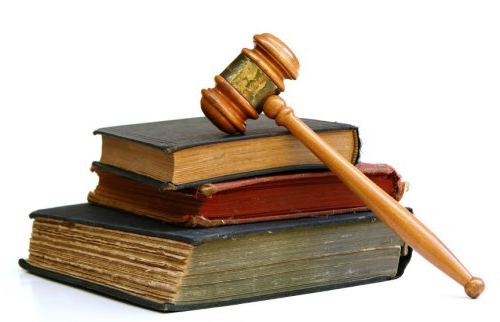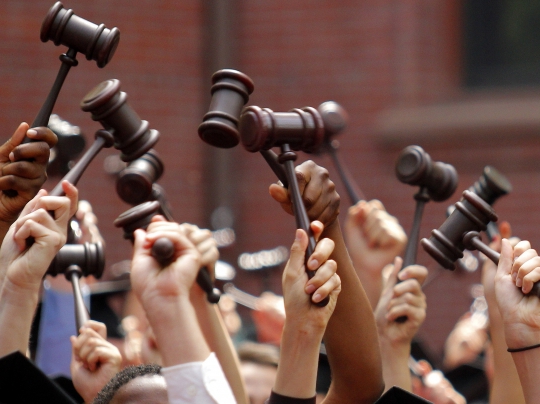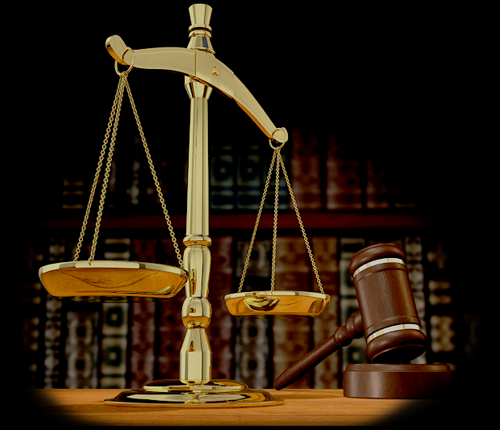Legal precedent as a source of law occupies a special place in the systems of some countries. So, in states with an Anglo-Saxon structure, it is its foundation. In a number of other countries (France and others) it is used to fill in the gaps in the legislative system. Next, we consider in more detail what constitutes a legal (legal) precedent. 
History reference
Legal precedent as a source of law has been used since ancient times. In ancient Rome, his statement was an oral statement (etiquette) or a decision on certain issues of praetors and other magistrates. At first, these actions were valid only for the magistrates themselves, who took them, and for the duration (usually a year) of their stay in power. However, many of the most successful positions for the ruling slave-owning class were repeated in other edicts. Thus, over time, they became stable.
So, the rules and decisions that were formulated at different times by the praetors gradually built up a system of generally binding prescriptions - praetorian law. In the Middle Ages, this tool was also widely used. After William I conquered England in 1066, traveling royal courts began to form. On behalf of the Crown, things were decided on a trip to a particular place. The adopted provisions were taken as a basis by other authorities when considering similar situations. The fragmented local acts were gradually replaced by a common law for the country. Over the following centuries and until now, this tool has special significance in the systems of the USA, Canada, Great Britain, Australia and other states.
Hierarchy
In accordance with the hierarchy, decisions made by higher courts (for example, the House of Lords in Wales and England) are considered binding on lower courts in similar situations. If there is a contradiction between the law and the precedent, then, as a rule, the norm of the first is used. Although in practice, the law cannot be applied unless clarified by an authorized authority. In England, they usually refer to the law, and not to the legal precedent in which it was used. Many decisions are interpreted very ambiguously. This, in turn, creates ample opportunities for judicial discretion. 
General definition
The very concept of “legal precedent” characterizes a specific solution to a problem or action, which in the future can be considered and become a model or standard. As you know, the regulation of public relations is carried out through regulations, laws. In some cases, during the trial, the court cannot find a suitable position by which the situation can be resolved. In this regard, he chooses one of the following techniques:
- Sets a new norm in accordance with general principles.
- Interprets a similar current situation, extending it to the situation in question.
As a result, new norms are formed, which are subsequently used in practice in similar cases. These provisions are binding and serve as judicial precedents. Given the above, we can conclude that the phenomenon under consideration is a process of giving normative force to the decision of the authorized body in a particular case, which is subsequently taken as a rule in the course of the proceedings of similar cases.
Key Features
The legal precedent is characterized by casuism, plurality, flexibility and inconsistency. The first characteristic indicates maximum concreteness and closeness to the actual case.This is due to the fact that the legal precedent is developed in accordance with the decision of specific cases, incidents, isolated situations. Even in normative acts that are issued by a state authority, there may be inconsistencies. The precedent's flexibility consists in the ability to choose one of the most suitable solutions. There is no such possibility in the legislation. The multiplicity of the precedent lies in the fact that there are many instances that can create it. In this regard, it acquires duration in time and a significant amount of action. 
Legal use case example
As it can serve, say, the sending of German troops to Afghanistan during the period of hostilities there. In accordance with state laws, Germany cannot participate in battles outside the zone of NATO countries. In the above example, the characteristic features of the precedent are viewed:
- Casuism. This situation is unusual - the reason for the outbreak of war between Germany and a country that did nothing is unclear.
- Inconsistency. Germany sent its army in violation of the constitution. In this regard, the legal precedent that was associated with this should have been flexible.
- Plurality. It consisted in the fact that this event was authorized by several authorities.
Legal custom, case law
These two categories are approximately equal in their "age." Legal custom and legal precedent are similar. External similarity is manifested in the fact that they are formed through repeated repetition in time of one situation. Legal precedent and legal custom, however, have differences. In particular, they differ in their strength. Legal custom is protected by coercive state power. As security measures, laws and other norms are used. Legal precedent always acts as part of the regulatory system. Towards the end of the 19th century, for example, its independence was generally recognized. Subsequently, he completely subjugated the custom, since he had great power. 
Use in the Russian Federation
In domestic law, a precedent is not regarded as a source. Officially, domestic legislation does not adopt other legislative practice. At the same time, the judiciary sometimes cannot rely on the necessary norm because of its absence. In this regard, they are forced to fill in the gaps in the legislation, to eliminate ambiguities and ambiguities with their decisions. Thus, the lack of necessary laws contributes to the precedent acquiring a special role. At the same time, he cannot formally fill in the gaps, eliminate the shortcomings and ambiguities.
Modern realities
Judges are forced to periodically turn to the legislator with a particular legislative initiative. When trying to solve a case by analogy, their actions are often not ordered and somewhat inconsistent. In judicial practice, it is possible to interpret legislation at the highest level. However, it is not possible to create prescriptions for new relationships if the law does not regulate them. As a result, the judiciary has to wait until the lawmakers make a formal decision. 
Legislative initiative
According to many experts, the judiciary should be included in the law-making process. This is mainly due to the fact that it includes institutions of a qualified professional level that have a direct connection with life, the formation of social relations. If the courts are admitted to the rulemaking process, that is, directly to the creation of laws or the refinement and refinement of already adopted laws, this will make it possible to bring legislation closer to practical life. It is these instances that have the personnel capabilities and knowledge to create regulations and high-quality standards.In the process of lawmaking, the courts would seek to facilitate their work, since they know the conflicting places in the law, the most pressing problems that have to be faced, issues that need to be urgently addressed. As a result, removing them from lawmaking makes it less useful and productive.
Another opinion
Supporters of the idea of not recognizing legal precedent as a source of Russian law cite the constitutional principle of the separation of powers as an argument. In addition, they argue that the use of this phenomenon in such a status would be contrary to the used Romano-German laws. This structure has no concept defining such a form as legal precedent. In the Russian legal system, respectively, it also should not be. 
Formation of a special regulatory institution
Judicial practice is formally sent and summarized in the explanations of the Plenum of the Armed Forces. It is extremely important in the process of applying the law, since it is a de facto specific regulatory institution. A place close to legal precedents is occupied by decisions of the Constitutional Court. In the subjects, a similar role belongs to the conclusions of local statutory and constitutional instances.
Classification
In modern doctrine, the following types of legal precedent are distinguished:
- Administrative. It is a decision taken by the management body or authority of the relevant jurisdiction.
- Judicial. It is presented as a decision taken in a criminal or civil case.
findings
Being not recognized in the Romano-German legal system, the precedent is still valid. This is proved by its use in everyday practice. This, in turn, allows us to conclude that the legal precedent does not contradict the Romano-Germanic doctrine. This means that the rule-making of instances must exist in close cooperation with the parliament.
Finally
Judicial lawmaking is largely associated with the specification (interpretation) of norms and filling gaps in the legislation. The provisions developed in the courts are based on existing acts, and not on subjective will. In accordance with the foregoing, we can conclude that legal precedent acts as one of the most important sources of law in many countries. Moreover, he undoubtedly has both positive and negative sides. The former include the flexibility, accuracy and certainty of a case law system. These qualities are due to the fact that this tool allows you to make specific specific decisions on certain matters. Along with this, the precedent contributes to the maximum compliance of the court ruling with the gravity of the crime in question.
This tool has a significant impact on the development of international doctrine in various fields. For example, the resolution of a particular dispute between one country through the conclusion of an agreement often leads to the repeated use of this method of resolving conflicts between other states. Legal precedent can be considered as a form of law. However, in some countries it is officially recognized as part of the basis of the rule-making doctrine. Such states, in particular, include Canada, the USA, Great Britain and others. These countries perceived "common law" - a system in which the precedent acts as the main source.  Formally authorized instances are associated with decisions made by higher authorities of the relevant jurisdiction. But this applies only to the sphere of direct interpretation of the precedent in the process of choosing a specific solution in a particular dispute.In the possibility of rejecting the existing forms due to the difference in the circumstances of the pending case, the authorized bodies have slightly more freedom. Recognition of the precedent allows the courts to fulfill the law-making function not only in the absence of the required law, but also in the presence of it. Through the use of this tool, the direct trial process acquires some flexibility. Despite the fact that in Russia, the precedent does not have an official status as a source of law, it acts realistically, filling in the gaps and eliminating inaccuracies and contradictions of the legislative system operating in modern conditions.
Formally authorized instances are associated with decisions made by higher authorities of the relevant jurisdiction. But this applies only to the sphere of direct interpretation of the precedent in the process of choosing a specific solution in a particular dispute.In the possibility of rejecting the existing forms due to the difference in the circumstances of the pending case, the authorized bodies have slightly more freedom. Recognition of the precedent allows the courts to fulfill the law-making function not only in the absence of the required law, but also in the presence of it. Through the use of this tool, the direct trial process acquires some flexibility. Despite the fact that in Russia, the precedent does not have an official status as a source of law, it acts realistically, filling in the gaps and eliminating inaccuracies and contradictions of the legislative system operating in modern conditions.
